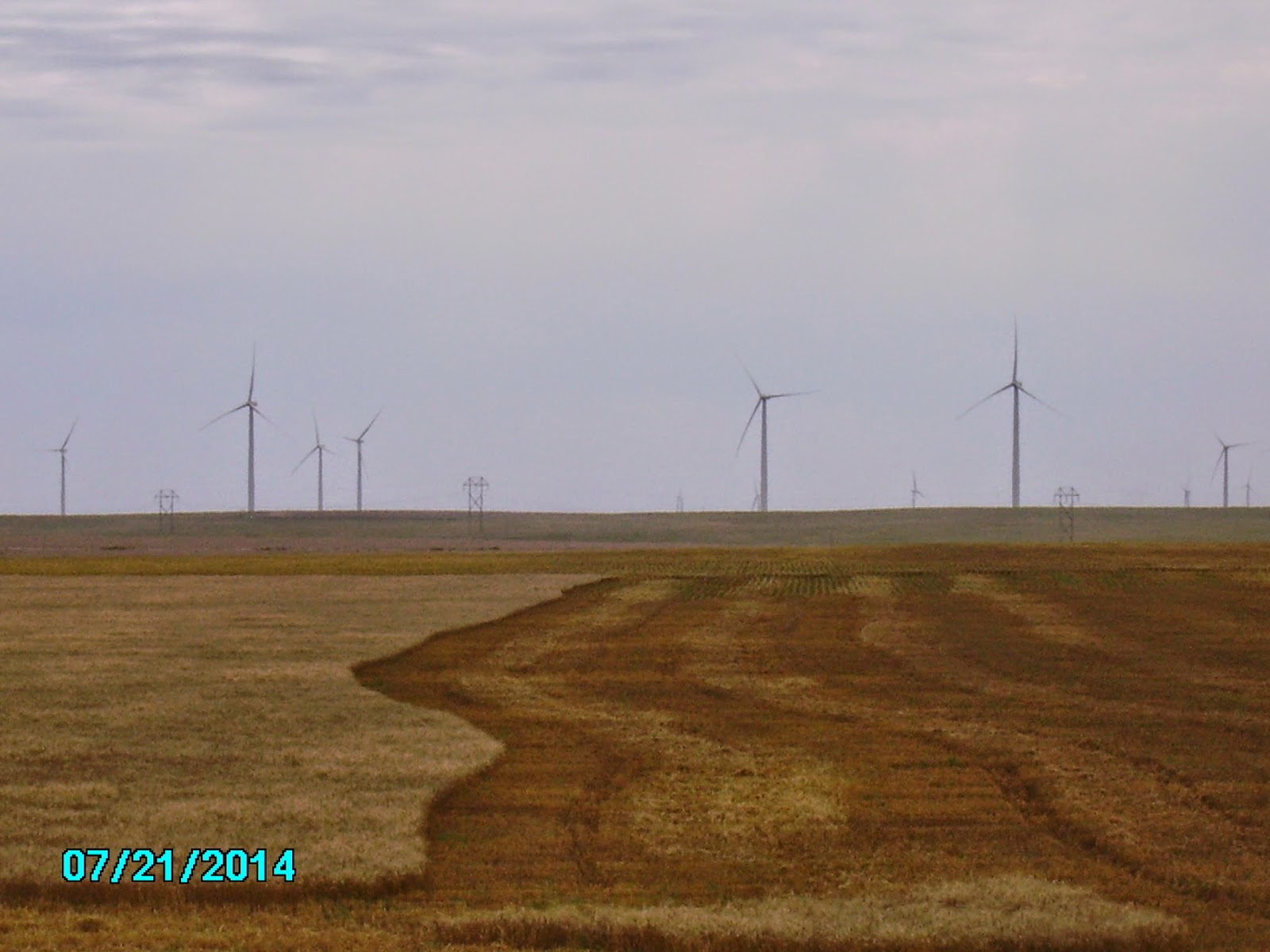Rise up and look
about. That’s what you do out on the old
flat plain when you get up in the morning.
What direction will the wind blow from today?
In olden times,
you had to search for some sort of weather vane to find the wind
direction. In these modern times, a
quick glance out the window suffices.
The windmills, like sunflowers, all face the same direction. The windmills face into the wind.
Sunday a week ago,
that early morning glance indicated zero breeze conditions. Not a mill was turning anywhere.
A couple of
hours later, as we set out to continue the wheat harvest we had resumed only
the day before, a northerly surface breeze prevailed. Yet nary a mill turned. Hmmm.
Highly unusual. It doesn’t happen
very often that the wind blows below and it’s calm above, and no windmills turning.
Sure enough, the
chaff and rust and dust swirled about the combine as I progressed across the
field, and still no motion from the wind machinery. A Sherlock Holmes deduction: somebody shut the windmills off, probably to
make a connection with the new substation just built.
The stoppage
lasted till Tuesday afternoon. At night,
it was just like the old days—no noise, no red lights. You could step outside in the dark and see
stars from horizon to horizon.
By Wednesday
morning, things were back to normal. The
noisy neighbors were back. But it only
takes a glance to see what direction the wind is blowing.
2014
Harvest. Harvest began on Thursday
December 10. A minor breakdown on Friday
marred an otherwise good day. On
Saturday, everything lurched to a halt when a bearing in the combine’s clutch drive
disintegrated. Saturday evening, the
cold damp weather came to roost.
A big
disadvantage of running ancient machinery is the unavailability of parts. Bearings ordered on Monday arrived on
Tuesday. Removing an old bearing from
the clutch-drive shaft destroyed a half moon key. That key, scheduled to arrive on Wednesday
morning, showed up Tuesday afternoon.
Thus it was the combine was restored to running order on Wednesday
afternoon.
To while away the
time, we broke out the old John Deere 55.
However, somehow a mouse managed to build a nest in the lower radiator
hose. Filling the radiator with water
and starting the engine spread trash throughout the cooling system. As a result, the poor old thing heated up
nearly every time we started it. It
never got to the field. But it did get a
good airing, getting out of the shed for the first time since 1990.
The
weather straightened out enough that harvest cold resume on Saturday, July
19. It ended on Monday, July 21. Yield this year was twice last year’s (11
bushels to the acre last year, 23 bushels / acre this year). Nothing to write home about but good enough
to put in a blog, I guess.
This year’s crop
had a good deal of black rust. The dark
spots in the stubble that look like muddy spots are really where the combine
started up and dumped the rust dust that accumulated in the machine while it
was stopped during unloading the grain bin.
The job is done
and the grain is in the bin.




















